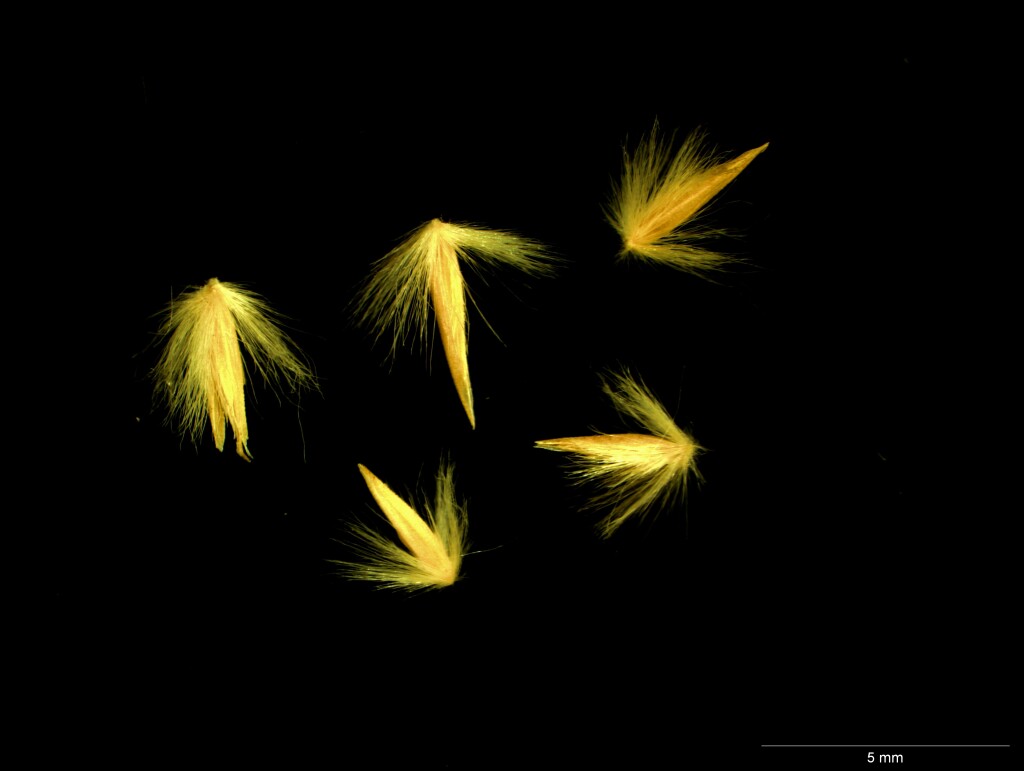Deyeuxia talariata
N.G.WalshShortly rhizomatous perennial, culms erect, 25–100 cm high. Leaf-blades rather stiff, loosely to closely folded, ribbed, smooth and glabrous, 6–40 cm long and 1.5–3 mm wide when flattened out; sheaths often purplish; ligules truncate, 1.5–3 mm long. Inflorescence a rather dense, cylindrical panicle 4–17 cm long, sometimes interrupted near the base. Spikelets 3.8–5 mm long, usually slightly purplish; glumes narrowly acute, subequal, scabrous along the keel in the upper part; lemma acute, equal to or slightly exceeding the glumes, 5-nerved, evenly and minutely scabrous, becoming somewhat hardened at maturity, awnless or shortly awned from apex or just below; awn (when present) straight, to 0.8 mm long, exceeding lemma by up to 0.5 mm; callus hairs dense, two-thirds to almost as long as lemma; rachilla bristle 1–1.5 mm long, plumose, with hairs virtually reaching the apex of the lemma Flowers Feb.
VAlp. Also NSW (high plateau country south-east of Bombala). Rare, known in Victoria from only a few sites on and near the Cobberas and the nearby Nunniong Plateau, and at each site occurring in damp, peaty, Sphagnum-rich heath.
Walsh, N.G. (1994). Poaceae. In: Walsh, N.G.; Entwisle, T.J., Flora of Victoria Vol. 2, Ferns and Allied Plants, Conifers and Monocotyledons, pp. 356–627. Inkata Press, Melbourne.
 Spinning
Spinning
